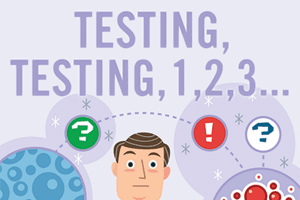It is really not easy to choose the most suitable device in case of Web testing . Anyway, here are some actions you should take when choosing a device for mobile testing:
- Do an analysis to determine the most popular and used gadgets on the market.
- Choose devices with different OS.
- Choose devices with different screen resolutions.
- Pay attention to the following factors: compatibility, memory size, connection, etc.
As already mentioned, you have many advantages for testing mobile applications on real devices:
- High accuracy of the test result.
- Simple error replication.
- Points such as battery drain, geolocation, push notifications, and built-in device sensors are easily tested.
- Ability to check incoming interruptions (calls, SMS).
- The ability to test a mobile application in real conditions and conditions.
- No false positives.
And also some disadvantages:
- A huge number of commonly used devices.
- Additional device maintenance costs.
- Limited access to devices often used in foreign countries.
As you can see, testing on real devices is a good solution, but it also has some limitations. You must overcome them to make the mobile app testing process truly effective.
Emulators or simulators

It is easy to guess that these are special tools that imitate or imitate the functionality and behavior of mobile devices. The “emulator” and the “value simulator” are often confused. Despite almost the same pronunciation, they are not equally significant. In fact, the emulator is an original replacement for the device. Although you can run programs and applications on your gadget, you have no way to change them.
The simulator does not copy the hardware of the device, but you have the opportunity to configure an environment similar to the OS of the original device. Therefore, to test a mobile application, it is better to use mobile simulators. Emulators are more suitable for testing a mobile site. Here you can read more about emulators and simulators.
Some advantages of using simulators to test a mobile application:
- Simple setup.
- It works fast.
- Helps test and examine the behavior of your mobile application.
- Cost-effective.
Some disadvantages of using simulators to test a mobile application:
- The hardware of the device is not taken into account.
- False positives are possible.
- Incomplete data of simulation results, which creates certain difficulties for a complete analysis of test results.
Mobile app cloud testing
Testing mobile apps with cloud-based tools seem like the best choice. This can help you overcome the shortcomings of real devices and simulators.
The main advantages of this approach:
- Easy accessibility.
- Ability to run mobile devices on multiple systems and networks.
- The ability to not only test but also update and manage applications in the cloud.
- Cost-effective.
- High scalability
- The same script can be run on multiple devices in parallel.
Some useful cloud tools that can help you test your mobile app are Xamarin Test Cloud, Perfecto Mobile Continuous Quality Lab, and Keynote Mobile Testing. Here you can read more about mobile testing tools.
Some weaknesses of cloud mobile testing:
- Less control.
- There is no such high level of security.
- Dependence on an Internet connection.
Currently, many experts support the view that manual testing will die. Of course, this is not true. Of course, we cannot do without testing automation, but there are also situations where manual testing is preferable.




